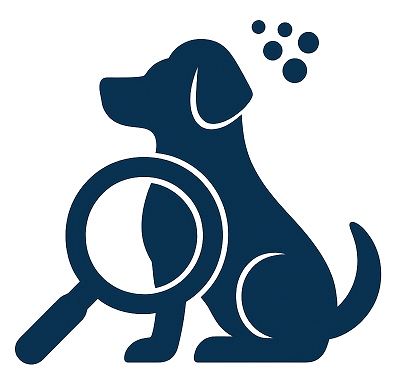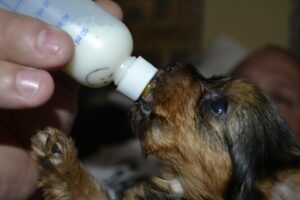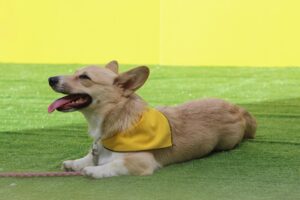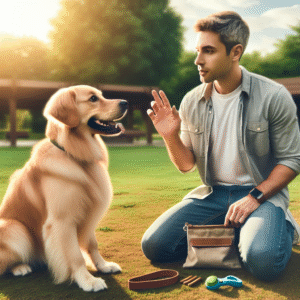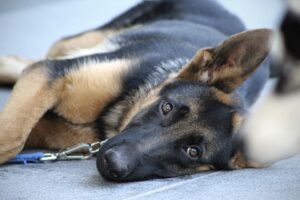
Introduction
Greeting people politely is an essential behavior for any well-mannered dog. However, many adult dogs struggle with this skill due to various factors, such as previous training methods, lack of socialization, or simply being overly enthusiastic. This article will guide you through the process of training your adult dog to master polite greetings, ensuring that your furry friend becomes a well-behaved and welcomed guest in all social settings.
Understanding Canine Greeting Behavior
Before diving into training techniques, it is crucial to understand why dogs greet the way they do. Dogs are naturally social animals, and greeting one another is an essential part of their communication. When dogs greet each other, they often sniff faces or rear ends, jump, and display excitement. While these behaviors are perfectly normal in the canine world, they can be inappropriate and even intimidating in human interactions.
Set Realistic Expectations
Training an adult dog to greet people politely requires patience and consistency. It is important to set realistic expectations and understand that behavior change takes time. Depending on your dog’s temperament, previous training, and consistency in your approach, it might take weeks or even months to fully master polite greetings.
Consistency is Key
Consistency is at the core of any successful training regimen. Ensure that everyone in your household is on the same page and uses the same commands and techniques. Mixed signals can confuse your dog and hinder progress.
Assess Your Dog’s Current Behavior
Begin by observing your dog’s current greeting behavior. Does your dog jump on people? Bark excessively? Approach with too much excitement? Understanding the specific behaviors you want to change will help you tailor your training approach effectively.
Training Techniques for Polite Greetings
Teach the “Sit” Command
The “sit” command is a foundational skill that can help curb unwanted greeting behaviors. Here’s how to teach your dog to sit:
1. Hold a treat close to your dog’s nose.
2. Move your hand up, allowing your dog’s head to follow the treat and causing their bottom to lower.
3. Once in a sitting position, say “sit,” give them the treat, and offer plenty of praise.
4. Repeat this process several times daily until your dog masters the command.
A dog that sits on command is less likely to jump on people, making “sit” a valuable tool in greeting situations.
Introduce “Off” and “Stay” Commands
In addition to “sit,” teaching your dog the “off” and “stay” commands can significantly improve greeting behavior.
– **”Off” Command**: Use this command to discourage jumping. When your dog jumps, say “off” firmly and turn away. Do not reward them with attention until all four paws are on the ground.
– **”Stay” Command**: Once your dog has mastered “sit,” introduce “stay.” Command your dog to sit, then say “stay” while taking a step back. If your dog remains seated, return and reward them. Gradually increase the distance and duration.
Practice Calm Greetings
Calm greetings are the ultimate goal. To practice, enlist the help of friends or family:
1. Have your dog on a leash and command them to sit as the person approaches.
2. If your dog remains calm and seated, allow the person to greet them and offer a treat.
3. If your dog becomes overly excited or jumps, have the person step back until your dog calms down.
Reward Calm Behavior
Always reward your dog for calm and appropriate greetings. Use treats, toys, or affection to reinforce good behavior. Positive reinforcement encourages your dog to repeat the desired actions.
Desensitization and Socialization
Desensitization is a powerful tool in training polite greetings. It involves gradually exposing your dog to greeting scenarios in a controlled manner. Begin with low-distraction environments and progressively introduce more challenging situations.
– **Controlled Environment**: Start practicing in a quiet room with minimal distractions.
– **Gradual Exposure**: Slowly introduce your dog to new people and environments, ensuring they remain calm and composed.
– **Socialization**: Encourage your dog to interact positively with other dogs and people during walks or visits to the park. Well-socialized dogs are generally more relaxed and better at handling greetings.
Addressing Overexcitement
Overexcitement is a common issue when dogs greet people. Here are some tips to manage this behavior:
– **Ignore Unwanted Behavior**: If your dog jumps or barks excessively during greetings, ignore them until they calm down. Avoid eye contact and wait for them to settle.
– **Redirect Energy**: Engage your dog in a brief play session before guests arrive to help expend excess energy.
– **Practice Impulse Control**: Incorporate impulse control exercises into your routine, such as “leave it” or “wait” commands, to help your dog manage excitement.
Common Challenges and Solutions
Training your dog to greet politely may present some challenges. Here are common issues and strategies to overcome them:
Fear or Anxiety
Some dogs may exhibit fear or anxiety when meeting new people. To address this, work on building your dog’s confidence through positive reinforcement and gradual exposure to new experiences.
Regression
Dogs, like humans, can regress in their training. If this happens, revisit basic commands and reinforce positive behaviors consistently.
Inconsistent Behavior
If your dog behaves differently with different people, ensure everyone uses the same commands and techniques. Consistency from everyone involved is crucial.
Conclusion
Training your adult dog to master polite greetings is a rewarding journey that strengthens your bond and enhances your dog’s social skills. By understanding your dog’s behavior, setting realistic expectations, and using positive reinforcement, you can guide them towards becoming a well-mannered and pleasant companion. Remember, patience and consistency are your best allies in this endeavor. With dedication and practice, your dog will soon greet people calmly and politely, making every interaction a positive experience.
